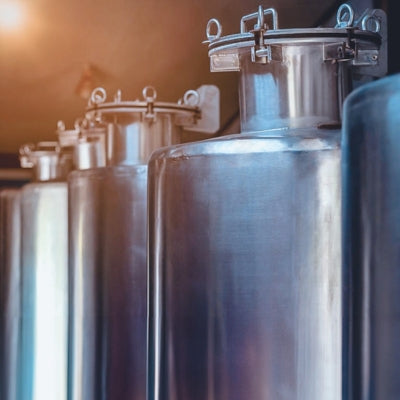
Alcoholic fermentation: monitoring
In the third part of our article series on alcoholic fermentation, Westgarth Wines wine specialist Maurizio Broggi discusses monitoring the fermentation.
Once fermentation has started, the winemaker must closely monitor its progress. This can be achieved by observing carbon dioxide production and the activity of the yeasts and measuring the density and temperature of the fermenting wine. As long as carbon dioxide is produced, yeasts are still actively fermenting.
Measuring density
Since yeasts feed on sugars to produce alcohol, the density of the fermenting wine provides an indication of sugar consumption and thus alcohol level. Density is typically measured using a hydrometer. Since grape must is denser than alcohol, a drop in density indicates that sugars have been consumed and alcohol has been produced. The lower the density level, the more sugars have been converted into alcohol. Fermentation is considered completed when most of the sugars have been converted into alcohol and the density falls below 1. In most cases, this corresponds to less than 2g per liter of fermentable sugars.
Temperature
Temperature is one of the most critical parameters of fermentation. It not only affects the rate and duration of fermentation but also has a significant impact on the profile and character of the wine. By controlling and limiting the temperature, the winemaker can control the rate of fermentation.
Yeasts can work and survive only within a limited range of temperatures and the heat produced by yeasts during fermentation increases the temperature of the fermenting wine, thus increasing the speed of fermentation. Higher temperatures promote the extraction of tannins, color, and flavors from the grape skins. However, higher temperatures also lead to the loss of volatile aromatic compounds. At lower temperatures, the yeast activity (and so the rate of fermentation) slows down, but more volatile aromatic compounds are retained.
Extreme temperatures
Extreme temperatures at either end of the range (i.e. too cold, or too hot) are likely to negatively affect fermentation. Elevated temperatures (i.e. above 35°C/95°F) may lead to yeast struggling to survive, causing fermentation to become sluggish or stuck. Likewise, fermentation temperatures that are too low slow the activity of the yeasts, also resulting in sluggish or stuck fermentation. Additionally, low temperatures in white winemaking cause the production of high levels of isoamyl acetate, a powerful-smelling ester with overwhelming aromas of ripe banana and pear drops. In red wines, lower temperatures result in poor extraction of color and tannins.
Optimal temperatures
The optimal temperature range of fermentation depends on grape variety and wine style. White wines are typically fermented between 10 and 20°C (50-68°F). At these temperatures, fermentation takes longer, usually between two to three weeks. Lower temperatures are preferable to produce aromatic, fruity, and crisp whites such as New Zealand Sauvignon Blanc. Higher temperatures are preferred in traditional white wine regions such as Alsace where varieties like Riesling are often fermented at 18-20°C (64-68°F) and even higher, to enhance varietal character and a more floral, richer style.
Red wines are usually fermented at higher temperatures than whites, typically between 20 and 32°C (68-89°F). Higher temperatures in red winemaking are necessary to encourage the extraction of color, tannins, and flavors from the grape skins. A higher temperature also means faster fermentation and, as such, the duration of fermentation for reds is usually shorter than for whites. Often, the optimal temperature range in red winemaking is a compromise between the need to extract sufficient phenolics from the skins while at the same time preventing excessive heat which may cause loss of aromatics. Typically, a range between 26 and 30°C (79-86°F) provides a satisfactory balance between fermentation duration, maceration time, and extraction of skin phenolics while at the same time avoiding overheating and loss of aroma compounds.
Important considerations
The control of temperature depends on the local climate and the size and construction of the fermentation vessels. In cellars with small fermentation vessels or in cool regions, heat dissipates rapidly and efficiently without the need for artificial temperature control. However, in warmer regions or with large fermentation vats, the dissipation of heat is slower and more difficult to achieve naturally, thus artificial cooling is necessary. In the latter case, vats are equipped with ice or cold-water jackets on the outside of the vessel or internal cooling coils or plates.
These refrigeration systems are nowadays fully automatic and can maintain a constant temperature even in the largest vats where the heat produced is quite significant, requiring more rapid and effective cooling. Cool regions, where late autumn temperatures can get too cold, may have the opposite problem, requiring warming to allow fermentation to proceed smoothly. Depending on the climate, wines that are barrel fermented may require temperature-controlled barrel rooms to maintain an appropriate ambient temperature to conduct the fermentation.
Want to read more? Take a look at some of our other blogs:



